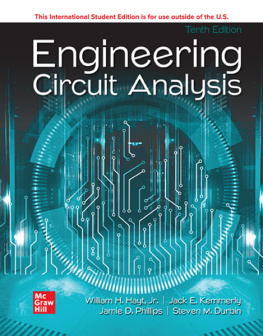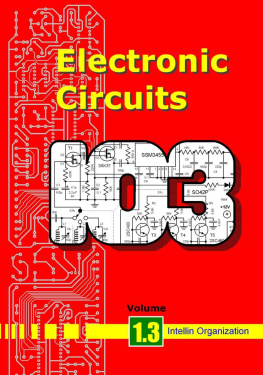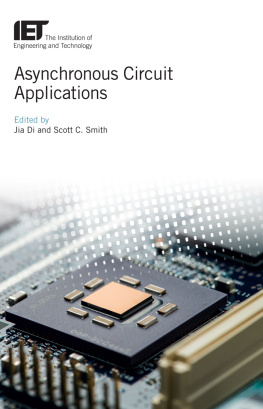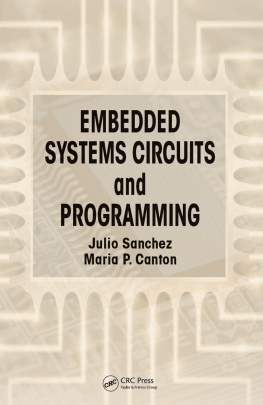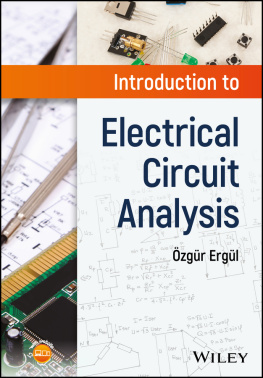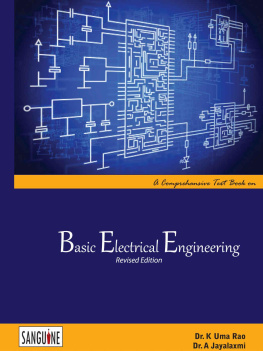I want to thank you and congratulate you for downloading the book, Circuit Engineering: The Beginners Guide to Electronic Circuits, Semi-Conductors, Circuit Boards, and Basic Electronics .
This book contains a beginners course on circuit engineering. Here, the basics of electric and electronic circuits are discussed. You will grasp the definitions of circuits, semi-conductors, resistors, inductors, transformers, circuit boards, and electronics, in general. Youll even be introduced to electrical safety tips and a set of skills needed in electronics, as well as a short take on reverse engineering, hacking, microcontroller programming, and robotics.
Alongside, you can apply all that youll be learning once you get started with the proposed circuit projects for beginner. Youll also be rewarded a peek at different career-advancement possibilities. While reading about the fundamentals and various theories in the subject is important, hands-on learning is equally important. This way, you can put your newly gathered knowledge to good use.
If youre uncertain whether or not you have what it takes to learn the ropes in circuit engineering, let this book help you decide. Chances are, you have the stamina for the field and for all you know, you can discover a new passion for circuits and electronic devices.
Chapter I First Things First: An Introduction to Circuit Engineering
In 1882, there was a circuit war ; it was between the notable electrical engineers and scientists, Thomas Edison (inventor of the DC system) and Nikola Tesla (inventor of the AC system).
While Thomas Edison stated that an efficient way of distributing power was via a DC system , Nikola Tesla argued that although DC systems are efficient, an alternating current is the more practical option. It started as a simple clash of ideas, but it eventually led to a major rift. Neither professional conceded; both of them insisted that their own systems were better.
In the end, it was Nikola Tesla that took home the glory . Case in point? He was granted funds by an internationally recognized firm, Westinghouse. The majority of the power sources of New York City were based on the ideas of the Serbian engineer; at Niagara Falls in Canada, a power plant was built.
If youre interested in finding out more about the particular circuit war, AC and DC systems , and all critical discussions on circuits, taking a course about electronic circuits is the way to go.
I.A. - What Is a Circuit?
Both an electric circuit and an electronic circuit refer to a complete pathway for electric current, which starts and ends at a single point; it is a passage that allows the electricity to enter at one place, then, let it pass through a series of stops, and finally, leave it to exit at the same place. The list of basic examples of a circuit includes a light switch (off and on) and battery-operated lamps .

A circuit that follows a fundamental design
A circuit can function well - granted that its design is well-conceptualized. As much as possible, it is recommended that arriving at a simplistic product should be the goal; the simple and straightforward a design is, the better. With a fundamental concept, even if other (beginner-level) circuit engineers who will subject it to inspection will not have a difficult time in understanding its flow. Although there may be complex systems, the agenda is not intended to complicate the explanations.
Moreover, a circuit can be referred to as a space with a conductive path that grants electrons the opportunity to move freely. To create one with a brilliant design, a tip is to learn about the classifications of all circuits. You can use the knowledge to determine the appropriate kind of network, as well as the need for an external or internal source.
2 classifications of a circuit:
- Linear or non-linear a circuit that is based on either linear or non-linear networks; it is composed of independent and/or dependent sources and passive elements
- Active or passive a circuit that is based on either the absence (passive circuit) or the presence (active circuit) of a source; a source can be a power source or voltage source
I.B. - A Circuit & Its Types
Not all circuits are alike. In fact, one of the most common misconceptions involves an electric circuit and an electronic circuit ; both are said to be one and the same, but they are not. While the former can carry average to high voltage , the latter has the tendency to have low voltage load .
Moreover, it is always important to be aware of the different circuit types, especially if youre about to make your own circuit; the kind of circuit that you create needs to have the ability to handle a preferred load.
Circuit types:
- Closed circuit it is a circuit that is fully functional
- Open circuit it is a circuit that can no longer function due to a damaged or missing component, or a loose connection
- Short circuit it is a circuit that comes without a load
- Parallel circuit it is a circuit that connects to other circuits; it is like the main power source or the primary circuit in a series of circuits
- Series circuit it is a circuit that connects to other circuits; the same amount of electricity is distributed to each of its component circuits; the main power source or the primary circuit is unclear
I.C. - Conductors, Insulators & Semi-Conductors
Conductors, insulators , and semi-conductors give light to the fact that a circuits electrical properties are dependent on the circuit type, as well as on their conduction bands (i.e. their allowed electric power). For instance, if a particular power source chooses to distribute a 9-volt electric power to a closed circuit, its electrical properties can be evaluated by using 2 details: (1) its characteristic as a closed circuit and (2) 9-volt electric power.
Moreover, conductors, insulators, and semi-conductors are integral concepts to the conductivity of an object. While conductors and semi-conductors are grouped to describe charged carriers , insulators are still considered as relative despite not containing any free charge.

Insulators can be any ion-less object; the most common examples of semi-conductors are copper and aluminum & for conductors, gold and silver
Conduction bands:
- Conductor it is a conduction band that is referred to as the almost full band
- Insulator it is a conduction band that is referred to as an empty band
- Semi-conductor it is a conduction band that is referred to as an almost empty band
I.D. - Breaking Down the Components of a Circuit
A circuit can be either simple or complex , and be both simple and complex . If the circuit in subject is a series circuit, with a group of 10 different circuits that are connected to it or if the said circuit is just a basic closed circuit with 5 different stops, it can be rather confusing to trace. However, if you dissect any circuit, youll discover 3 constant, integral components.


